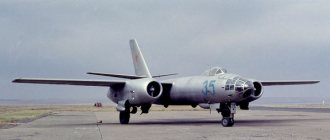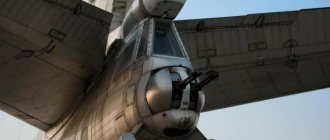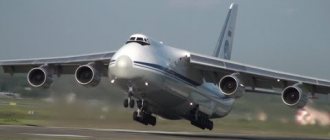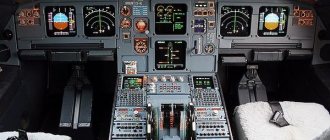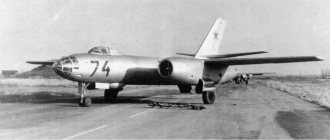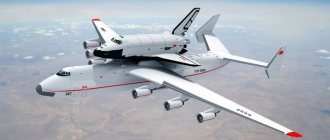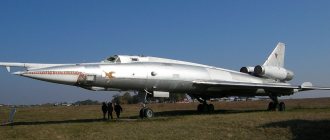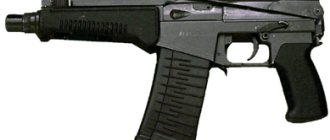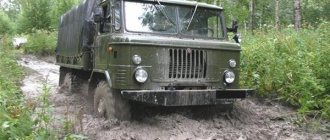This term has other meanings, see Ilya Muromets (meanings).
| S-22 "Ilya Muromets" | |
| "Ilya Muromets" in flight | |
| Type | biplane bomber |
| Developer | Aviation department of the Russian-Baltic Carriage Works |
| Manufacturer | Russian-Baltic Carriage Works |
| Chief designer | Igor Sikorsky |
| First flight | December 23, 1913 |
| Start of operation | 1914 |
| End of operation | 1923 |
| Status | decommissioned |
| Operators | Russian Empire RSFSR |
| Years of production | 1913—1917 |
| Units produced | 76 |
| Basic model | "Russian Knight" |
| Media files on Wikimedia Commons | |
Ilya Muromets
(S-22 “Ilya Muromets”) is the general name of several series of four-engine all-wood biplanes produced in the Russian Empire at the Russian-Baltic Carriage Plant during 1914-1919. The plane set a number of records for carrying capacity, number of passengers, time and maximum flight altitude. It is the first serial multi-engine bomber in history.[1]
Development and first copies
The aircraft was developed by the aviation department of the Russian-Baltic Carriage Plant in St. Petersburg under the leadership of I. I. Sikorsky. The technical staff of the department included such designers as K. K. Ergant, M. F. Klimikseev, A. A. Serebryannikov, V. S. Panasyuk, Prince A. S. Kudashev, G. P. Adler, N. N. Polikarpov etc. “Ilya Muromets” appeared as a result of further development of the “Russian Knight” design, during which it was almost completely redesigned, only the general layout of the aircraft and its wing box with four engines installed in a row on the lower wing were left without significant changes, the fuselage was fundamentally new. As a result, with the same four German Argus engines of 100 hp. With. the new aircraft had twice the load weight and maximum flight altitude.
In 1915, engineer Kireev designed the R-BVZ aircraft engine in Riga. The engine was a six-cylinder, four-stroke, water-cooled. Automotive-type radiators were located on its sides. R-BVZ was installed on some modifications of the Ilya Muromets [2].
"Ilya Muromets" became the world's first passenger aircraft. For the first time in the history of aviation, it was equipped with a comfortable cabin, sleeping rooms and even a bathroom with toilet, separate from the cabin. The Muromets had heating (using engine exhaust gases) and electric lighting. Along the sides there were exits to the lower wing consoles. The outbreak of the First World War and the Civil War in Russia prevented the further development of domestic civil aviation.
Construction of the first car was completed in October 1913. After testing, demonstration flights were carried out on it and several records were set, in particular a load capacity record: on December 12, 1913, 1100 kg (the previous record on Sommer’s plane was 653 kg), on February 12, 1914, 16 people and a dog were lifted into the air, with a total weight of 1290 kg. The plane was piloted by I. I. Sikorsky himself.
In the spring of 1914, the first Ilya Muromets was converted into a seaplane with more powerful engines. In this modification, it was accepted by the naval department and remained the largest seaplane until 1917.
Second aircraft ( IM-B Kievsky
) smaller in size and with more powerful engines, on June 4, lifted 10 passengers to a record altitude of 2000 meters, on June 5, set a flight duration record (6 hours 33 minutes 10 seconds), - on June 17, made a flight from St. Petersburg to Kyiv with one landing . In honor of this event, the series was named Kyiv. In 1915-1917, 3 more aircraft with the name “Kyiv” were produced (one series G-1, the other G-2, see below).
Aircraft of the first and Kiev types were called series B
. A total of 7 copies were produced.
Su-29 Engine. Dimensions. Range of flight. Practical ceiling. Story
Work on the two-seat trainer and sports aircraft Su-29 began at the Design Bureau named after. BY. Sukhoi in 1990. It became a further development of the sports aerobatic acrobatic aircraft Su-26M. When developing the aerodynamic design and design of the Su-29 aircraft, many years of experience in operating the Su-26, as well as the wishes of sports pilots, were taken into account. The two-seat Su-29 is designed for training, preparation and participation of athletes in domestic and international aerobatics competitions. In 1991, construction began on two aircraft prototypes intended for flight tests, as well as two for statistical tests.
Read more…
Use during World War I
Lipetsk. Historical information: 1918-1919 - squadron of ships Ilya Muromets
Lieutenant I. S. Bashko Motorman-gunner of the Ilya Muromets, sergeant major of the Russian Air Force Marcel Plia, 1916
By the beginning of the war (August 1, 1914), 4 Ilya Muromets had already been built. By September 1914 they were transferred to the Imperial Air Force.
On December 10 (23), 1914, the emperor approved the resolution of the military council on the creation of the Ilya Muromets bomber squadron ( Aircraft Squadron, EVK
), which became the world's first bomber formation.
M.V. Shidlovsky became its head. The Directorate of the Ilya Muromets airship squadron was located at the headquarters of the Supreme Commander-in-Chief at the Headquarters of the Supreme Commander-in-Chief. He had to start work practically from scratch - the only pilot capable of flying the Muromtsy was Igor Sikorsky, the rest were distrustful and even hostile to the very idea of heavy aviation [ source not specified 2226 days
], they had to be retrained, and the machines should be armed and re-equipped .
The squadron's aircraft flew for the first time on a combat mission on February 14 (27), 1915.
During the war, production of B series
, the most widespread (30 units produced). They differed from the B series in being smaller in size and faster. The crew consisted of 4 people, some modifications had two engines. Bombs weighing about 80 kg were used, less often up to 240 kg. In the fall of 1915, an experiment was carried out with the bombing of the largest bomb in the world at that time, a 410-kilogram bomb.
In 1915, production of the G series
with a crew of 7 people,
G-1
, in 1916 -
G-2
with a rifle cabin,
G-3
, in 1917 -
G-4
.
In 1915-1916, three D-series vehicles (DIM)
.
Aircraft production continued until 1918. G-2
aircraft , one of which (the third named “Kievsky”) reached an altitude of 5200 m, was used during the Civil War.
From the combat report:
...In flight (July 5, 1915) at an altitude of about 3200-3500 m, the plane under the command of Lieutenant Bashko was attacked by three German planes. The first of them was seen through the lower hatch, and it was about 50 meters lower than our car. At the same time, our plane was over Shebrin, 40 versts from the forward positions under the control of Lieutenant Smirnov. Lieutenant Smirnov was immediately replaced by Lieutenant Bashko. The German car, having greater speed and a greater power reserve, quickly overtook our plane and found itself 50 meters higher on the right side in front, opening machine-gun fire on our plane. In the cockpit of our vehicle at this time, the work of the crew members was distributed as follows: Lieutenant Smirnov was near the commander, staff captain Naumov opened fire from a machine gun, and co-pilot Lavrov from a carbine. During the first attack by the enemy, machine gun fire from an enemy vehicle broke both upper gasoline tanks, the filter of the right engine group, the radiator of the 2nd engine, both gasoline pipes of the left engine group were broken, the glass of the right front windows was broken, and the aircraft commander, lieutenant, was wounded in the head and leg Bashko. Since the gasoline lines to the left engines were interrupted, the left taps from the gasoline tanks were immediately closed and the fuel pump of the left tank was turned off. Then the flight of our car was on two right engines. The German plane, after crossing our path for the first time, tried to attack us a second time from the left side, but when met by machine-gun and rifle fire from our plane, it turned sharply to the right and, with a huge roll, began to descend towards Zamosc. After repelling the attack, Lieutenant Smirnov replaced Lieutenant Bashko, who was bandaged by co-pilot Lavrov. After the dressing, Lieutenant Bashko again began to control the plane, Lieutenant Smirnov and co-pilot Lavrov took turns closing the holes in the right group filter with their hands and taking all possible measures to preserve the remaining gasoline in the tanks to continue the flight. When repelling the attack of the first enemy aircraft, a full cassette of 25 pieces was fired from the machine gun, only 15 pieces were fired from the second cassette, then the cartridge jammed inside the magazine and further firing from it was completely impossible.
Following the first plane, the next German plane immediately appeared, which flew only once above us on the left and fired at our plane with a machine gun, and the oil tank of the second engine was pierced. Lieutenant Smirnov opened fire on this plane from a carbine, co-pilot Lavrov was in the front compartment of the cabin near the filter, and staff captain Naumov was repairing the machine gun. Since the machine gun was completely out of order, Lieutenant Smirnov handed over the carbine to Naumov, and he replaced co-pilot Lavrov, taking measures to conserve gasoline, since Lavrov’s both hands were numb from great stress. The second German plane did not attack us again.
On the line of forward positions, our vehicle was machine-gunned by a third German aircraft flying at a great distance to the left and above us. At the same time, artillery was also firing at us. The altitude at that time was about 1400-1500 m. When approaching the city of Kholm at an altitude of 700 m, the right engines also stopped, because the entire supply of gasoline had run out, so it was necessary to make a forced descent. The last one was made 4-5 versts from the town of Kholm near the village of Gorodishche, near the airfield of the 24th aviation regiment on a swampy meadow. At the same time, the landing gear wheels got stuck right up to the struts and were broken: the left half of the chassis, 2 struts, the propeller of the second engine, several transmission levers, and the right rear lower spar of the middle compartment was slightly cracked. When inspecting the aircraft after landing, in addition to the above, the following damage from machine gun fire was found: the propeller of the 3rd engine was broken in two places, the iron strut of the same engine was broken, the tire was broken, the rotor of the second engine was damaged, the cargo frame of the same engine was broken, the rear strut was broken the first engine, the front strut of the second engine and several holes in the surface of the aircraft. The descent was carried out personally by the aircraft commander, Lieutenant Bashko, despite his injuries.
During the war years, 60 vehicles were received by the troops. The squadron flew 400 sorties, dropped 65 tons of bombs and destroyed 12 enemy fighters. Moreover, during the entire war, only 1 aircraft was shot down directly by enemy fighters (which was attacked by 20 aircraft at once), and 3 were shot down. [ source not specified 2226 days
]
- On September 12 (25), 1916, during a raid on the headquarters of the 89th German Infantry Division in the village of Antonovo and the Boruny station, the plane (ship XVI) of Lieutenant D. D. Maksheev was shot down.
Two more Muromets were shot down by anti-aircraft battery fire:
- On November 2, 1915, the plane of Staff Captain Ozersky was shot down, the ship crashed
- On 04/13/1916, Lieutenant Konstenchik’s plane came under fire; the ship managed to reach the airfield, but due to the damage received it could not be restored.
In April 1916, 7 German airplanes bombed the airfield in Segewold, as a result of which 4 Muromets were damaged.
But the most common cause of losses were technical problems and various accidents - about two dozen cars were lost because of this. The IM-B Kyiv flew about 30 combat missions and was later used as a training aircraft.
According to General A. A. Brusilov, Ilya Muromets did not live up to the hopes placed on him [3]:
...The famous “Ilya Muromtsy”, on which so many hopes were pinned, did not justify themselves. It must be assumed that in the future, this type of aircraft, significantly improved, will be developed, but at that time it could not bring significant benefit...
— Brusilov A. A. “Memories”
The history of the creation of the Ilya Muromets aircraft
Igor Ivanovich Sikorsky was born in 1882 in Kyiv into the family of a professor at Kyiv University. The future designer received his education at the Kiev Polytechnic Institute, where he joined the Aeronautical Section, which united enthusiasts of the still nascent aviation. The section included both students and university teachers.
In 1910, Sikorsky launched the first single-engine aircraft of his own design, the S-2. In 1912, he received the position of designer at the Russian-Baltic Carriage Works in St. Petersburg, one of the leading machine-building enterprises of the Russian Empire. In the same year, Sikorsky began creating the first multi-engine experimental aircraft, the S-21 “Russian Knight,” which took off in May 1913.
The designer’s success did not go unnoticed: the unprecedented aircraft was demonstrated to Emperor Nicholas II, the State Duma gave the inventor 75 thousand rubles, and the military awarded Sikorsky with the Order. But, most importantly, the military ordered ten new aircraft, planning to use them as reconnaissance aircraft and bombers.
The first Russian Knight plane was lost as a result of an absurd accident: an engine fell on it, falling off an airplane flying in the sky. Moreover, the latter managed to land safely even without an engine. Such were the realities of aeronautics in those days.
They decided not to restore Vityaz. Sikorsky wanted to start creating a new air giant, whose name was given in honor of the epic Russian hero - “Ilya Muromets”. The new aircraft was ready in the fall of 1913, and its size, appearance and dimensions truly amazed contemporaries.
The length of the Ilya Muromets hull reached 19 meters, the wingspan was 30, and their area (on different modifications of the aircraft) was from 125 to 200 square meters. meters. The empty weight of the airplane was 3 tons; it could stay in the air for up to 10 hours. The plane reached a speed of 100-130 km/h, which was quite good for that time. Initially, the Ilya Muromets was created as a passenger plane; its cabin had light, heating and even a bathroom with a toilet - unheard of things for aviation of that era.
In the winter of 1913, tests began; for the first time in history, the Ilya Muromets was able to lift 16 people and the airfield dog Shkalik into the air. The weight of passengers was 1290 kg. To convince the military of the reliability of the new car, Sikorsky flew from St. Petersburg to Kyiv and back.
In the first days of the war, ten squadrons were formed with the participation of heavy bombers. Each such detachment consisted of one bomber and several light aircraft; the squadrons were directly subordinate to the headquarters of the armies and fronts. By the start of the war, four aircraft were ready.
However, it soon became clear that such use of airplanes was ineffective. At the end of 1914, it was decided to combine all Ilya Muromets aircraft into one squadron, which would be directly subordinate to Headquarters. In fact, the world's first formation of heavy bombers was created. The owner of the Russian-Baltic Carriage Works, Shidlovsky, became his immediate boss.
The first combat flight took place in February 1915. During the war, two new modifications of the aircraft were manufactured.
The idea of attacking the enemy from the air appeared immediately after the appearance of hot air balloons. Airplanes were first used for this purpose during the Balkan conflict of 1912-1913. However, the effectiveness of air strikes was extremely low; the pilots manually threw conventional grenades at the enemy, aiming “by eye.” Most of the military was skeptical about the idea of using airplanes.
"Ilya Muromets" took bombing to a completely different level. The bombs were hung both outside the aircraft and inside its fuselage. In 1916, electric release devices were used for bombing for the first time. The pilot piloting the airplane no longer needed to look for targets on the ground and drop bombs: the crew of the combat aircraft consisted of four or seven people (on different modifications). However, the most important thing was the significant increase in bomb load. The Ilya Muromets could use bombs weighing 80 and 240 kg, and in 1915 an experimental 410 kg bomb was dropped. The destructive effect of these ammunition cannot be compared with grenades or small bombs with which most vehicles of that time were armed.
"Ilya Muromets" had a closed fuselage, which housed the crew and quite impressive defensive weapons. The first vehicles to combat Zeppelins were equipped with a rapid-firing 37-mm cannon, then it was replaced with machine guns (up to 8 pieces).
During the war, "Ilya Muromtsy" made more than 400 combat missions and dropped 60 tons of bombs on the heads of enemies; up to 12 enemy fighters were destroyed in air battles. In addition to bombing, airplanes were also actively used for reconnaissance. One Ilya Muromets was shot down by enemy fighters, and two more aircraft were destroyed by anti-aircraft artillery fire. At the same time, one of the airplanes was able to reach the airfield, but could not be restored due to severe damage.
Much more dangerous than enemy fighters and anti-aircraft guns for pilots were technical problems; more than two dozen airplanes were lost because of them.
In 1917, the Russian Empire was rapidly falling into the Troubles. There was no time for bombers here. Most of the air squadron was destroyed by its own due to the threat of capture by German troops. Shidlovsky, along with his son, was shot by the Red Guards in 1918 while trying to cross the Finnish border. Sikorsky emigrated to the USA and became one of the most famous aircraft designers of the 20th century.
Use after the October Socialist Revolution
A walking deck on the roof of the cabin; passengers could go out there while moving.
In 1918, not a single combat mission was carried out by the Muromtsev. Only in August - September 1919 was Soviet Russia able to use two vehicles in the Orel area.
The first regular flights on domestic airlines in the RSFSR began in January 1920 with flights Sarapul - Yekaterinburg - Sarapul on the Ilya Muromets heavy aircraft [4].
In 1920, several sorties were flown during the Soviet-Polish War and military operations against Wrangel. On November 21, 1920, the last combat flight of the Ilya Muromets took place.
On May 1, 1921, the Moscow-Kharkov postal and passenger airline was opened. The line was served by 6 Muromtsevs, heavily worn out and with exhausted engines, which is why it was closed on October 10, 1922. During this time, 60 passengers and about 2 tons of cargo were transported.
In 1922, Socrates Monastyrev made a flight from Moscow to Baku on an Ilya Muromets plane.
One of the mail planes was transferred to an aviation school (Serpukhov), where it made about 80 training flights during 1922-1923. After this, the Muromets did not take off. The Air Force Museum displays a model of the Ilya Muromets, equipped with Czech-made engines. It was made life-size in Riga by RKIIGA students at the request of the Mosfilm film studio for the filming of the film “The Poem of Wings.” The model is capable of taxiing and jogging around the airfield. It entered the Air Force Museum in 1979 and has been on display since 1985 after restoration.
Historical value of the aircraft
At the beginning of its service, in 1914, the aircraft was an advanced airship, which had no equal. He set a strong vector of development for both bomber and passenger aircraft manufacturing.
The airplane had many opportunities for further modernization, but the collapse of the Russian Empire prevented its development. Nevertheless, the practice of using long-range bomber aircraft was developed for the first time.
For the first time, a long-distance flight was made, which gave rise to civil passenger aviation. Therefore, we can say that it was a very good plane that happened to be born at an unlucky time.
Author of the article:
Shatunov Roman
Technical data
| Ilya Muromets | IM-B | IM-V | IM-G-1 | IM-D-1 | IM-E-1 |
| Aircraft type | bomber | ||||
| Developer | Aviation department of the Russian-Baltic Carriage Works | ||||
| Used by | Air fleet of the Russian Empire | ||||
| Production time | 1913—1914 | 1914—1915 | 1915—1917 | 1915—1917 | 1916—1918 |
| Length, m | 19 | 17,5 | 17,1 | 15,5 | 18,2 |
| Upper wing span, m | 30,9 | 29,8 | 30,9 | 24,9 | 31,1 |
| Lower wing span, m | 21,0 | ||||
| Wing area, m² | 150 | 125 | 148 | 132 | 200 |
| Empty weight, kg | 3100 | 3500 | 3800 | 3150 | 4800 |
| Loaded weight, kg | 4600 | 5000 | 5400 | 4400 | 7500 |
| Flight duration, hour | 5 | 4,5 | 4 | 4 | 4,4 |
| Ceiling, m | 3000 | 3500 | 3000 | ? | 2000 |
| Rate of climb m/min | 2000/30 | 2000/20 | 2000/18 | ? | 2000/25 |
| Maximum speed, km/h | 105 | 120 | 135 | 120 | 130 |
| Engines | 4 things. "Argus" 140 l. With. (inline) | 4 things. "Russobalt" 150 l. With. (inline) | 4 things. "Sunbeam" 160 l. With. (inline) | 4 things. "Sunbeam" 150 l. With. (inline) | 4 things. "Renault" 220 l. With. (inline) |
| How much produced | 7 | 30 | ? | 3 | ? |
| Crew, people | 5 | 5—6 | 5—7 | 5—7 | 6—8 |
| Armament | 2 machine guns 350 kg bombs | 4 machine guns 417 kg bombs | 6 machine guns 500 kg bombs | 4 machine guns 400 kg bombs | 5-8 machine guns up to 1500 kg bombs |
Project 1234 code "Gadfly" small missile ships
In terms of architecture, the smooth-deck hull of the ship, Project 1234, has boat-like contours, a slight sheerness, a longitudinal framing system and is made of high-strength ship steel MK-35. The hull has a double bottom along most of its length and is divided by nine bulkheads into 10 watertight compartments. Bulkheads are located on frames 11, 19, 25, 33, 41, 46, 57, 68 and 80, on frames 87. — transom. The lower part of the bulkheads is made of steel grade 10 KHSN 2D (SHL-45), and the upper part is made of aluminum-magnesium alloy grade AMg61. Only the bulkheads on frames 11, 46 and the transom are made entirely of steel grades 10 KHSN D or 10 KHSN 2D (SHL-45).
Read more…
Armament
The bombs were placed both inside the aircraft (vertically along the sides) and on an external sling. By 1916, the aircraft's bomb load had increased to 500 kg, and an electric release device was designed to release bombs.
The first armament of the Ilya Muromets aircraft was the ship's rapid-fire Hotchkiss gun of 37 mm caliber. It was installed on the front artillery platform and was intended to combat Zeppelins. The gun crew included a gunner and loader. Sites for installing the gun were available on modifications “IM-A” (No. 107) and “IM-B” (No. 128, 135, 136, 138 and 143), but the guns were installed only on two vehicles - No. 128 and No. 135. They were tested, but were not used in combat conditions.
Also, various modifications of the Ilya Muromets aircraft were equipped with defensive small arms: Maxim, Vickers, Lewis, Madsen, and Colt machine guns were installed on them in various quantities and in different combinations [5].
ZRK 2K11 Circle. Damage range. Modifications. Compound
The S-75 air defense systems, which appeared in 1958, could not provide reliable cover from air strikes of combined arms (tank) formations in military operations, since they had low maneuverability and a long deployment time. Therefore, there was a need to create a military air defense system on a tracked chassis, which has maneuverability no worse than the maneuverability of the combined arms (tank) formations and units it covers. The development of the 2K11 Krug air defense system began in 1958. Since the “Circle” was supposed to become a medium-range complex (and this required bulky missiles, transmitting and antenna devices for air defense missile systems), it was not possible to place all its elements on one tracked chassis.
Read more…
see also
- Alekhnovich, Gleb Vasilievich - worked as a test pilot at the Russian-Baltic Carriage Plant in St. Petersburg, tested the Ilya Muromets aircraft.
- Spirin Ivan Timofeevich - pilot, Hero of the Soviet Union. He worked as an aerologist for the 2nd combat detachment of the Ilya Muromets heavy ship squadron, then as the head of the technical unit of the aviation detachment.
- "Russian Knight"
- Imperial Air Force
- Russian hero Ilya Muromets
- Corps airfield
Notes
- Andreev, Igor
. Combat aircraft. Publishing house "Ilbi", together with publishing house "Prostrex", Moscow, 1994, p. 34. ISBN 5-212-00730-5 - The world's first bomber and passenger aircraft "Ilya Muromets"
- Alexey Brusilov
. My memories. - M.: Veche, 2014. P. 59 - The first regular flights on domestic airlines in the Soviet Union (Russian) (inaccessible link). aviaspec.com. Archived October 30, 2012.
- Khairulin M. A.
“Ilya Muromets.” — P. 117. - Ilya Muromets (undefined)
. Aviation encyclopedia "Corner of the Sky" (2004). Retrieved February 18, 2013.
Description of design
The design of the Ilya Muromets is a four-engine biplane. The wings were connected by six connecting struts. The motors were located on the lower wing. To access the engines, a plywood walkway with wire railings was laid along the lower wings, giving access to any engine directly during flight. During a combat mission, the ability to repair the aircraft in flight more than once saved the lives of the aircraft and its pilots.
The length of the fuselage of the vehicle reached 19 meters, the area of the wings was 200 square meters. Aircraft speed is 100-130 km/h.
The chassis wheels were made with rubber cord shock absorption and covered with leather. Nowadays they would be called wide-profile.
Photo by Ilya Muromets
A special feature of the aircraft was its closed cockpit. Since the pilot could not see how far it was from the ground, the cockpit was equipped with instruments that were revolutionary for that time. In addition to the usual compass and four tacheometers, the cockpit contained two altimeters and two airspeed meters connected to a pitot tube (air pressure receiver). Also in the cockpit was a slip indicator - a curved glass tube with a ball inside.
View from the cockpit of Ilya Muromets
Pitch could be determined using the same device with marking angles for pitching and diving.
Literature
- Shavrov V.B.
History of aircraft designs in the USSR until 1938 - 3rd ed., corrected. - M.: Mechanical Engineering, 1985.: [1], [2] - Finne K. N.
Russian air heroes of I. I. Sikorsky. - Belgrade, 1930. - Katyshev G. I., Mikheev V. R.
Wings of Sikorsky. - M.: Military Publishing House, 1992. - ISBN 5-203-01468-8. - Khairulin M. A.
“Ilya Muromets.” The pride of Russian aviation. - M.: Collection; Yauza; EKSMO, 2010. - 144 p. — (War and us. Aviation collection). — ISBN 9785699424245.
Northrop B-2 Spirit Dimensions. Engine. Weight. Story. Range of flight
Preliminary work on a strategic bomber using radio wave-absorbing design and materials began in 1978, and a formal contract was awarded to the US Air Force in October 1981. The stealth aircraft was unveiled in metal in 1988 and made its first flight. The B-2 flew on July 17, 1989. The first operational aircraft arrived at Whiteman Air Force Base (Missouri) on December 17, 1993, and the combat readiness of the air wing of two air squadrons of 8 aircraft was achieved by the end of 1995. The total number of B-2s is 20 aircraft , 4 of which will be in turn for maintenance or modernization.
Read more…
